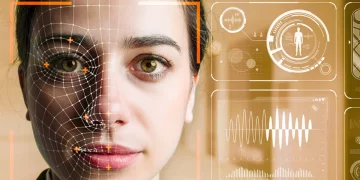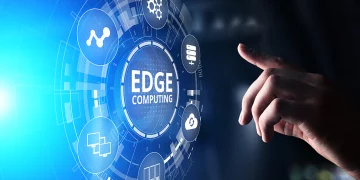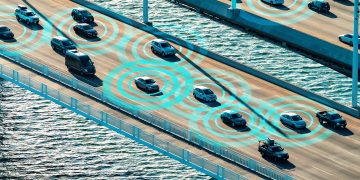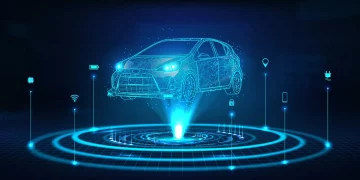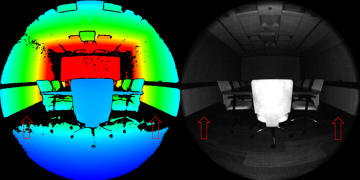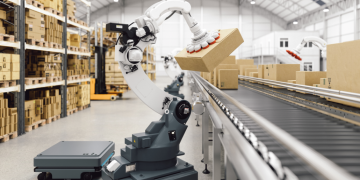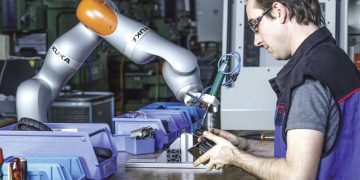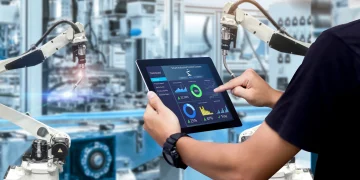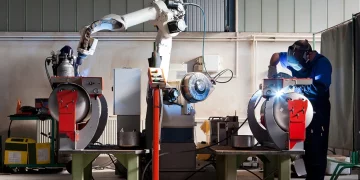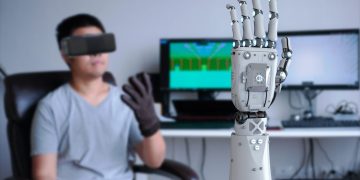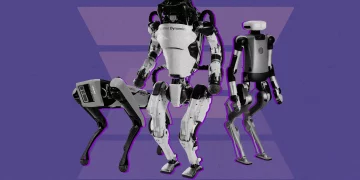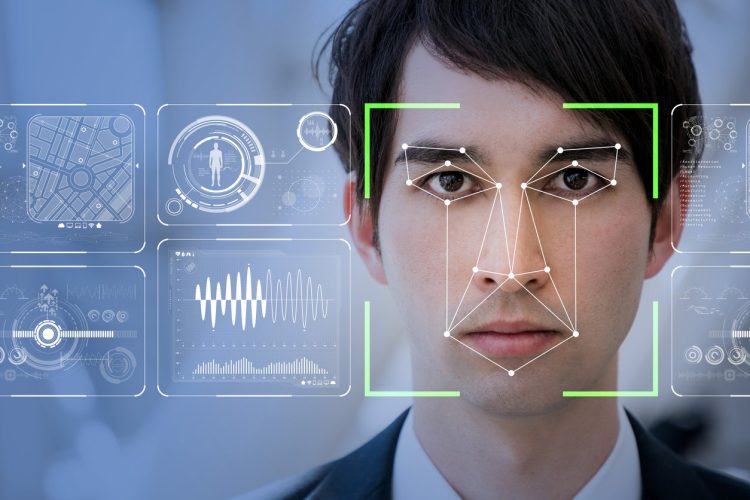Introduction
In recent years, Artificial Intelligence (AI) has made remarkable strides, not only in processing data and performing computational tasks but also in understanding and interpreting the subtleties of human emotions. Traditionally, machines have been designed to execute predefined tasks based on logic, commands, and instructions. However, as AI continues to evolve, there is an increasing interest in equipping machines with the ability to understand and respond to human emotions in ways that make interactions more natural, empathetic, and context-aware.
The ability of AI to recognize emotions through non-verbal cues such as facial expressions, voice tones, and even physiological signals is a rapidly growing field known as affective computing. This field is focused on creating machines that not only understand emotional signals but can also respond in a manner that feels intuitive and emotionally attuned to the user. These advancements have significant implications for a variety of industries, including customer service, healthcare, entertainment, and education, among others.
This article will explore how AI systems use signals like facial expressions, voice tones, and other indicators to recognize emotions, discuss the underlying technologies, examine applications, and address the challenges and ethical concerns involved.
1. The Fundamentals of Emotion Recognition in AI
1.1 What is Emotion Recognition?
Emotion recognition in AI refers to the technology that allows machines to interpret and respond to human emotional states. It uses a variety of biometric signals such as facial expressions, voice tonality, body language, and even physiological responses to gauge a person’s emotional condition. The goal is to make AI interactions more human-like and intuitive, moving beyond traditional task-oriented approaches.
- Facial expressions: Humans often convey emotions through facial movements. A smile may signal happiness, while a furrowed brow might indicate confusion or concern.
- Voice tone: Changes in pitch, volume, and cadence in speech can provide insight into a person’s emotional state. For instance, a higher pitch may indicate excitement, while a lower pitch might suggest sadness or frustration.
- Physiological signals: Heart rate, skin conductance, and breathing patterns are also physiological indicators of emotional states.
Emotion recognition technology aims to combine these cues into a coherent understanding of a person’s feelings, and AI can respond accordingly to make interactions feel more personalized and empathetic.
2. How AI Recognizes Emotions: Techniques and Technologies
2.1 Facial Expression Recognition
One of the most powerful methods AI uses to recognize emotions is facial expression recognition. Our faces are highly expressive, conveying a wide range of emotions in subtle ways. AI systems equipped with computer vision and machine learning algorithms can analyze facial features to determine a person’s emotional state.
- Key Facial Cues: The position of the eyebrows, eyes, and mouth are critical for detecting emotions. For example, raised eyebrows may indicate surprise, while a smile generally signals happiness.
- Deep Learning Models: Convolutional neural networks (CNNs), a type of deep learning model, are trained on large datasets of images labeled with emotional states. These models can learn to distinguish between different facial expressions and identify corresponding emotions.
- Real-time Analysis: With advancements in processing power, AI systems can now analyze facial expressions in real-time, enabling applications like customer service robots or interactive virtual assistants to adapt their behavior based on the user’s mood.
2.2 Speech Emotion Recognition
Another significant approach in emotion recognition is through speech analysis. Our voices contain rich emotional information beyond the words we speak. By analyzing speech characteristics such as pitch, tone, rhythm, and cadence, AI systems can infer emotional states such as anger, happiness, sadness, or frustration.
- Prosody: The rhythm, stress, and intonation of speech—known as prosody—are key indicators of emotion. AI systems can analyze these features to detect shifts in mood.
- Sentiment Analysis: Beyond just the tone, AI uses Natural Language Processing (NLP) to analyze the content of speech. By combining sentiment analysis with voice tone analysis, AI can gain a deeper understanding of the emotional context behind a person’s words.
- Voice Stress Analysis: Changes in voice stress can signal a person’s emotional state. Increased vocal tension may indicate stress or anxiety, while a relaxed tone may indicate calmness or contentment.
2.3 Physiological Signal Processing
In addition to facial expressions and speech, physiological signals provide critical insights into emotional states. These include heart rate, blood pressure, skin conductance, and other bodily reactions that change in response to emotional stimuli.
- Wearable Devices: Smartwatches and fitness trackers are capable of monitoring these physiological signals, providing real-time data on a user’s emotional state. When combined with AI, this data can be used to adapt experiences in real-time, such as adjusting the difficulty of a game or changing the tone of a digital assistant.
- Galvanic Skin Response (GSR): This measures skin conductivity, which increases with emotional arousal. AI can use this information to detect emotional stress, excitement, or fear.
- Heart Rate Variability (HRV): HRV measures the variation in time between heartbeats. High HRV is associated with a relaxed state, while low HRV can indicate stress or anxiety.
2.4 Multi-modal Emotion Recognition
Some of the most advanced emotion recognition systems use a combination of multiple signals, such as facial expressions, voice tone, and physiological data, to form a more comprehensive understanding of a user’s emotional state. This multi-modal approach improves accuracy and provides a deeper context for AI to respond.
- Fusion of Modalities: By integrating different input sources, AI can validate emotional signals from one modality with those from others. For instance, if a person’s face shows signs of anger but their voice suggests calmness, the AI can cross-check these signals to arrive at a more accurate assessment of the user’s emotional state.
- Adaptive AI: Multi-modal systems enable AI to be highly adaptive. For example, a smart virtual assistant could adjust its response based on the user’s mood, offering comforting words if the person is upset or more energetic interaction if the person seems happy.

3. Applications of Emotion Recognition AI
3.1 Healthcare
Emotion recognition AI is playing an increasingly important role in healthcare, particularly in mental health. Machines capable of detecting emotions through facial expressions or voice analysis can be used to monitor and support patients with conditions like depression, anxiety, or autism.
- Therapy and Counseling: AI-driven apps can help detect emotional shifts in users and offer real-time interventions, such as suggesting relaxation techniques or guiding users through breathing exercises when stress is detected.
- Autism Spectrum Disorder (ASD): Emotion recognition can assist individuals with ASD, who often struggle with reading emotional cues from others. AI tools can help by providing real-time feedback on how others are feeling, allowing for better social understanding.
3.2 Customer Service
In customer service, emotion recognition AI can enhance user experience by personalizing responses based on the customer’s emotional state. For example, a chatbot that detects frustration in a customer’s voice could offer an empathetic response or escalate the issue to a human representative.
- Automated Customer Support: AI can handle routine customer service inquiries, while also recognizing when a customer is upset, providing the right emotional response to resolve issues more effectively.
- Improved Interaction: By detecting emotions such as confusion or anger, AI can adjust the language used, provide additional clarifications, or offer a solution that better meets the emotional needs of the customer.
3.3 Entertainment and Gaming
Emotion recognition has the potential to revolutionize the entertainment industry. Video games, movies, and interactive media can now adapt in real-time based on the emotions of the player or viewer.
- Adaptive Gameplay: Games that recognize when a player is frustrated or losing interest can adjust the difficulty level or provide helpful hints to keep the experience enjoyable.
- Immersive Experiences: In virtual reality (VR) environments, AI can alter the storyline or setting based on the emotional reactions of the user, creating a more immersive and personalized experience.
3.4 Education
In education, emotion recognition technology can help educators understand how students are engaging with content and adjust teaching methods accordingly.
- Student Engagement: AI can assess whether students are bored, confused, or frustrated, allowing teachers to modify their approach, provide additional resources, or offer encouragement to keep students engaged.
- Personalized Learning: Emotion recognition allows for personalized learning experiences that adapt to the emotional state of the learner, improving outcomes and reducing dropout rates.
4. Challenges in Emotion Recognition AI
4.1 Accuracy and Reliability
Despite significant advancements, emotion recognition AI still faces challenges in terms of accuracy. Human emotions are complex, and interpreting them based on a few signals can lead to misinterpretation.
- Cultural Differences: Emotional expressions can vary widely across cultures. For example, smiling might indicate happiness in some cultures but politeness in others. AI systems need to be trained on diverse datasets to ensure accurate emotion recognition across different cultural contexts.
- Contextual Sensitivity: Emotions are highly contextual, and interpreting them in isolation can lead to mistakes. For example, a person may smile not out of happiness but as a coping mechanism in a stressful situation. Context-aware systems are needed to handle such nuances.
4.2 Privacy Concerns
The collection of emotional data raises serious privacy concerns, especially when it comes to facial expressions and voice recordings, which can be sensitive and personal.
- Consent: Users must be informed about when and how their emotional data is being collected, with clear consent mechanisms in place.
- Data Security: Storing emotional data presents security risks. Hackers could exploit this sensitive information, leading to potential misuse or manipulation.
4.3 Ethical Concerns
The use of emotion recognition AI introduces ethical dilemmas. For instance, AI systems might be used to manipulate emotions for commercial gain, such as influencing purchasing decisions or political opinions.
- Manipulation Risks: There is a concern that companies could exploit emotional data to target vulnerable individuals with ads or products designed to elicit specific emotional reactions.
- Bias and Fairness: Emotion recognition algorithms could introduce biases, particularly if they are trained on non-representative datasets. AI systems must be developed with fairness and inclusivity in mind.
5. Conclusion
AI’s ability to recognize and respond to human emotions through facial expressions, voice tones, and other signals represents a major breakthrough in Human-Computer Interaction (HCI). Emotion recognition not only makes interactions more natural and engaging but also holds great potential to transform industries such as healthcare, education, customer service, and entertainment.
However, as with any emerging technology, emotion recognition AI must be developed and implemented with care, addressing concerns about accuracy, privacy, and ethics. The future of this technology is promising, but it will require ongoing collaboration between researchers, policymakers, and industry leaders to ensure that it benefits society in a responsible and equitable manner.
By understanding and responding to human emotions, AI is moving beyond being a mere tool to become a more empathetic and responsive partner in human-machine interactions.






